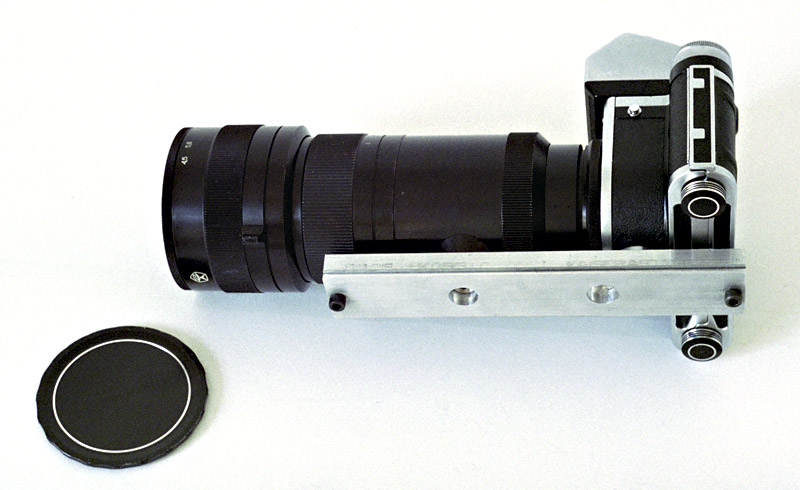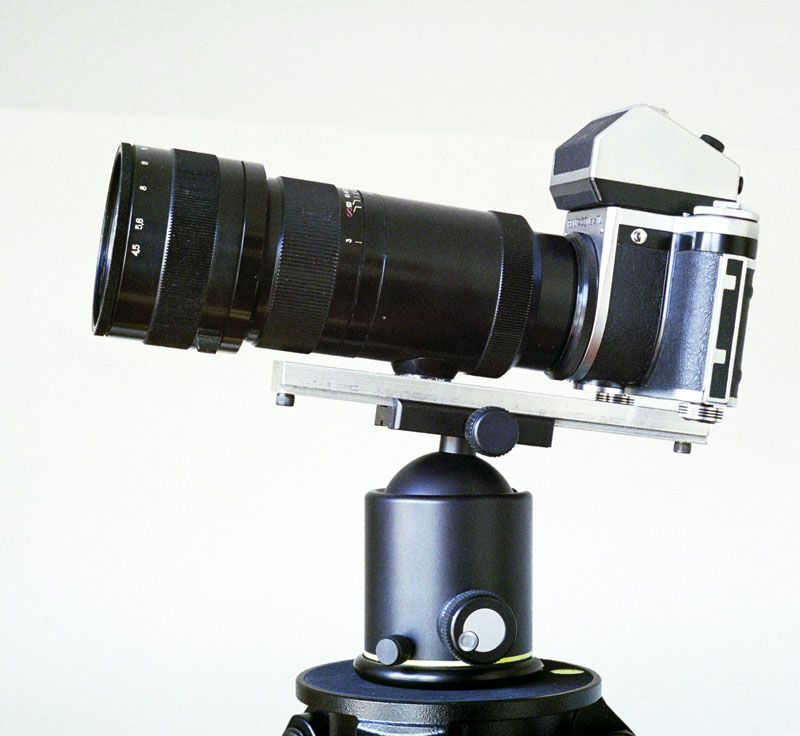Bigger, heavier and longer lenses, starting with the 180mm Carl Zeiss Sonnar, have their own tripod mount, and so it is the lens that should be attached to the tripod, and the camera to the lens.
Some users have experienced problems with some tripods or tripod-head quick-release plates, where the small surface area in contact with the lens tripod mount can make it difficult to prevent the lens swivelling on the tripod or QR plate.
Here are some suggested solutions.
1) Glue a suitable piece of patterned rubber to the top of the quick-release plate. This will ensure a better grip and probably solve the problem. You can see the sort of rubber that I have in mind on the flash grip here.
2) Some people have modified the tripod mount plate
on the bottom of the 180mm and 300mm lenses by permanently mounting a modified
plate with a screw or screws and/or a permanent adhesive. This is
fine if you have no intention of selling the lens, or if you feel that
the modification is an enhancement that will not reduce the value of the
lens in the event that you subsequently decide to sell it.
This solution is not possible with the camera, as it
will prevent the case being fitted to it.
3) For a given combination of the camera and a particular lens (one of the Sonnars, for instance) it would be possible to have a bar made that will screw into both the base of the camera and the tripod mount socket on the lens, with no modification to the camera or the lens. There is usually a height difference between the base of the camera and the base of the tripod mount socket on most lenses, so one end of the bar would need to have a block fitted to it to get the height right for the lens.

Here, a custom-made quick-release plate has been mounted
to the Tair 300mm lens.
It is not in fact attached to the camera, but it would
not be difficult to make a hole in the bar at the correct distance,
to enable it to be screwed to the camera’s tripod mount,
also
[C447-3A]

The height difference between the base of the lens tripod
mount and the camera tripod mount can be seen in this picture.
It would not be difficult to bridge the gap in this case
by using a standard camera case retaining screw with a socket on its underside.
[C447-2A]
The underside of this bar can have a wide enough surface to take a quick-release plate, or can be designed like the bar shown above and in my tripod report (here), to go straight onto the Arca-Swiss (or other brand) head.
4) For the camera only, I would suggest making a
base plate like the ones that I describe for holding a flash bracket.
See the links starting here.
Any of these has a much wider surface area to which a
quick-release plate should fit firmly without any risk of rotation.
Again, the under-side of the base plate or the top of the quick-release
plate can have a suitable piece of rubber glued to it to improve the grip.